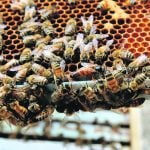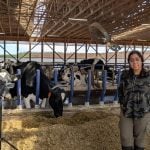Amendments that would block farmers from splitting one large livestock operation into smaller ones to skirt the local hearing process are back on the table in the Manitoba legislature.
The provincial government had sought last spring to close what it describes as a loophole in the Planning Act, but its bill was stopped by the provincial election in May.
The Planning Act requires livestock operations of more than 300 animal units to go through a local conditional-use hearing before construction or expansion. However, the Act as now worded could not prohibit an operator from splitting a proposed operation into two business entities.
Read Also

Mexico agriculture secretary says still no date for restarting cattle exports to U.S.
Mexican Agriculture Minister Julio Berdegue said on Wednesday that Mexico and the United States have not yet set a date to resume Mexican cattle exports amid an outbreak of the flesh-eating screwworm parasite.
Last spring’s amendments came on the heels of one particular proposal in which an applicant sought to build barns, each just under 300 animal units in capacity, divided only by a municipal road, MLA Tom Nevakshonoff explained to the Manitoba Co-operator at the time.
“The spirit of the legislation is challenged when an owner creates two smaller operations from one just to avoid local scrutiny,” said Intergovernmental Affairs Minister Steve Ashton in a release Thursday.
The amendments would require that applications for operations that have the same kind of livestock and same owner and are within 0.8 km of each other would be subject to a conditional-use hearing. That process includes a technical review and public hearing.











